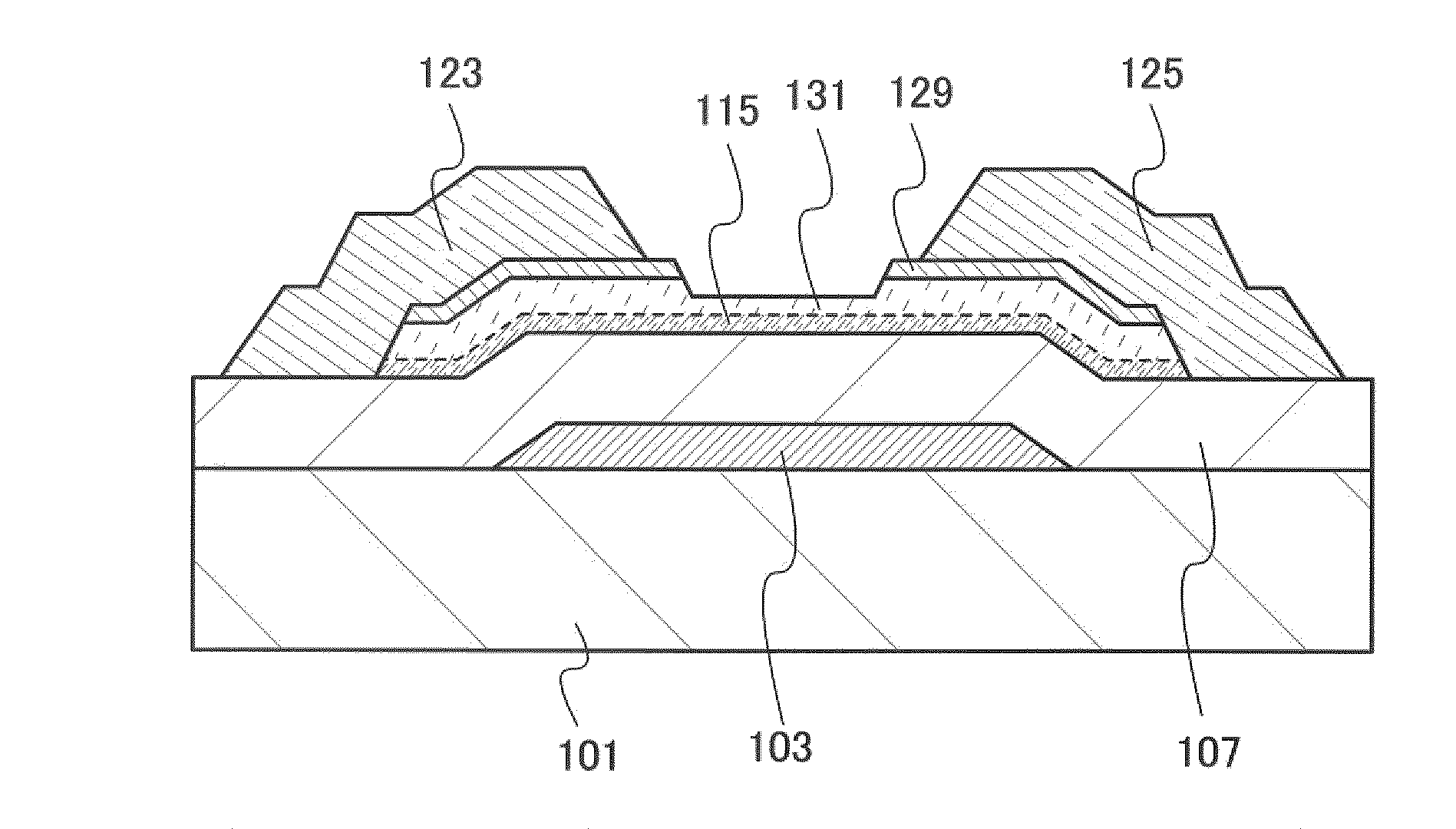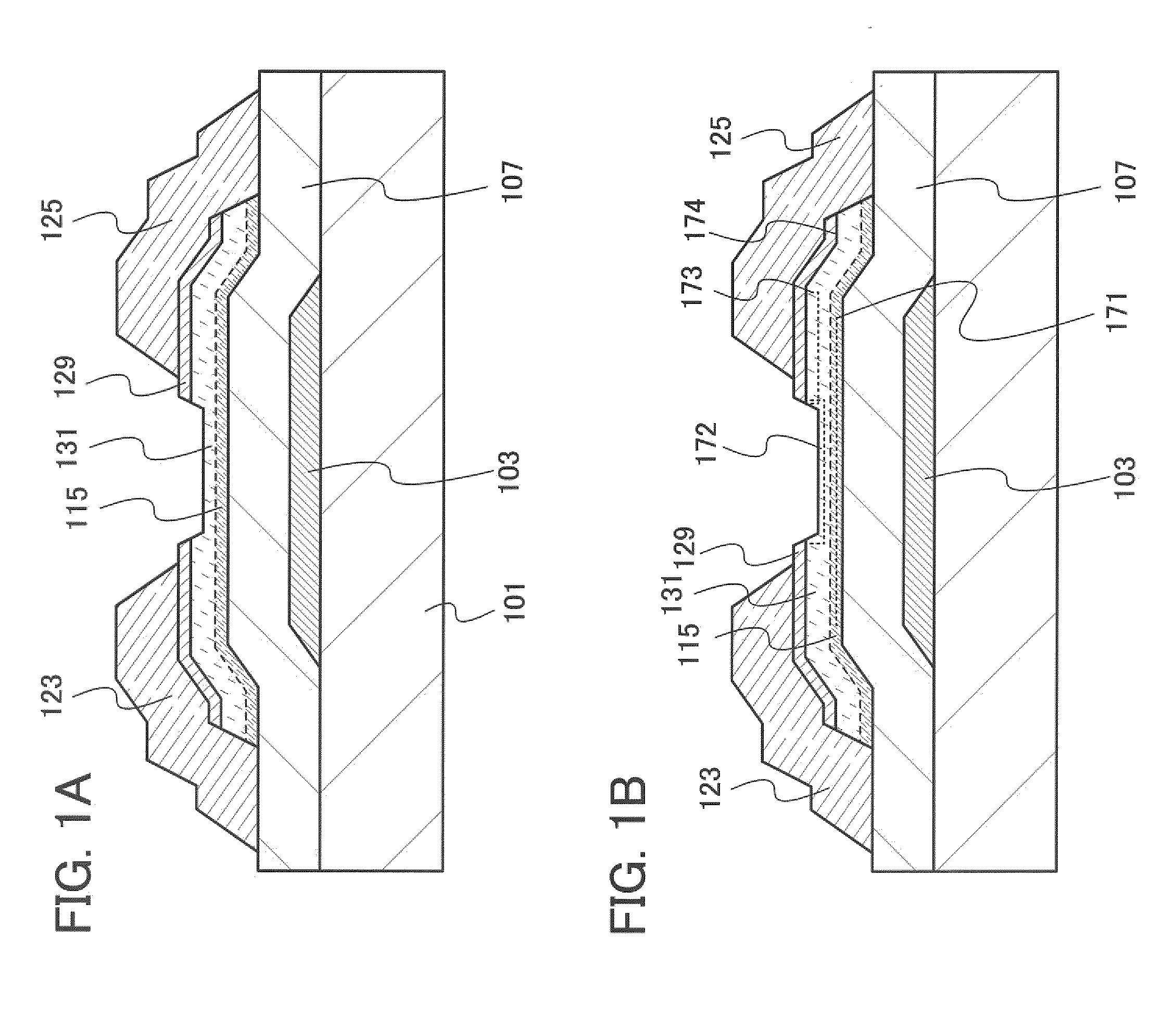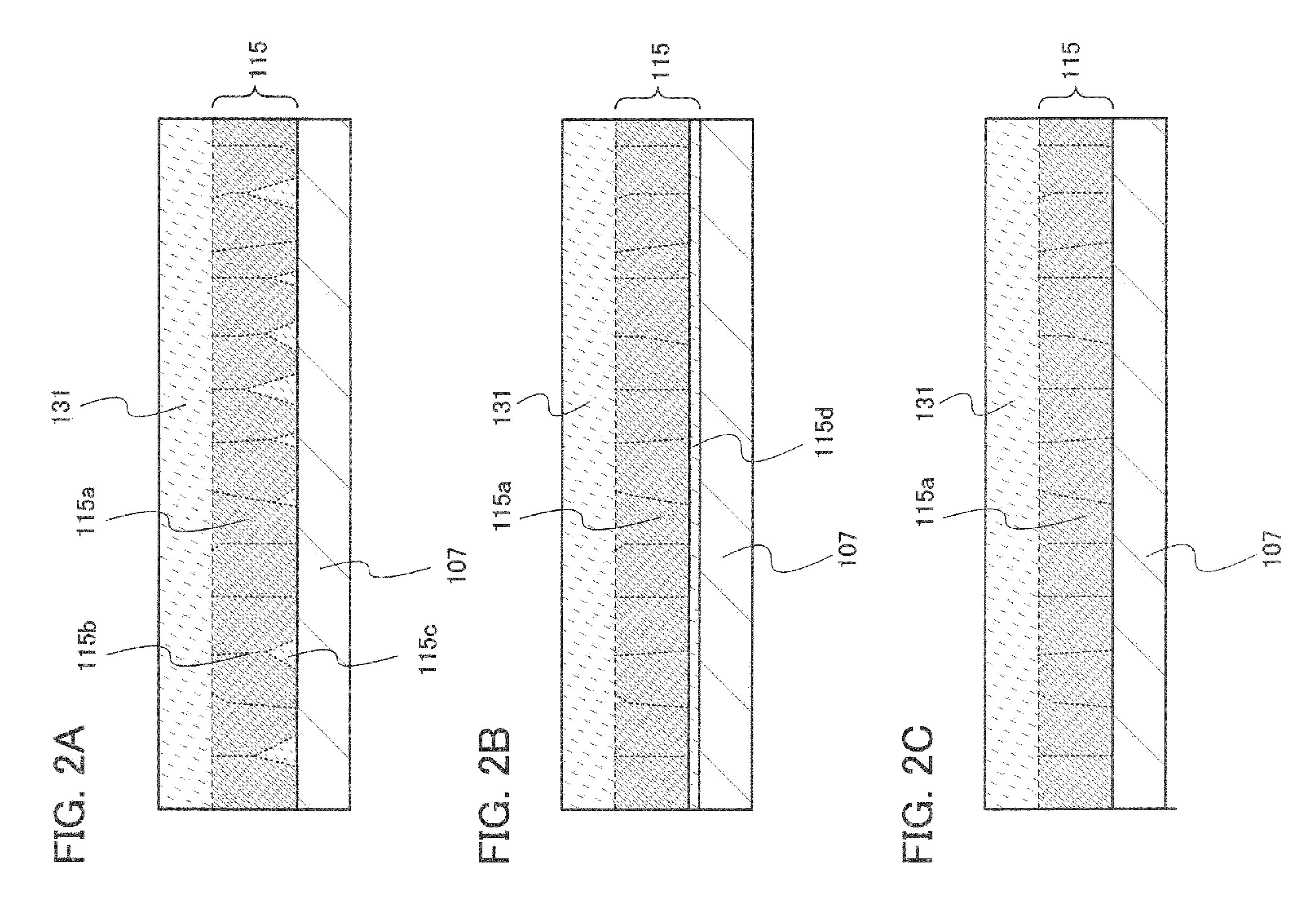Thin film transistor
a thin film transistor and transistor technology, applied in the field of thin film transistors, can solve the problems of low field-effect mobility and low on-current, low on-current, and inability to obtain sufficient switching characteristics, so as to achieve the effect of reducing the off increasing the on-current of the thin film transistor
- Summary
- Abstract
- Description
- Claims
- Application Information
AI Technical Summary
Benefits of technology
Problems solved by technology
Method used
Image
Examples
embodiment 1
[0092]In Embodiment 1, an example of a mode of a thin film transistor will be described with reference to the drawings.
[0093]FIGS. 1A and 1B are cross-sectional views of a thin film transistor according to this embodiment. A thin film transistor illustrated in FIG. 1A includes a gate electrode layer 103 over a substrate 101; a gate insulating layer 107 covering the gate electrode layer 103; a semiconductor layer 115 which is provided over and in contact with the gate insulating layer 107 and serves as a channel formation region; a buffer layer 131 over the semiconductor layer 115; and source and drain regions 129 which are provided over and in contact with part of the buffer layer 131. In addition, the thin film transistor includes a wiring layer 123 and a wiring layer 125 which are provided over and in contact with the source and drain regions 129. The wiring layer 123 and the wiring layer 125 form a source electrode and a drain electrode. Further, each layer is patterned into a de...
embodiment 2
[0183]In Embodiment 2, modes which can be used for the semiconductor layer 115 in the thin film transistor described in Embodiment 1 will be described with reference to FIG. 9 and FIGS. 10A and 10B.
[0184]In a thin film transistor described in this embodiment, dispersed microcrystalline semiconductor particles or a net-like microcrystalline semiconductor 118 are / is formed over the gate insulating layer 107 (FIG. 9).
[0185]Dispersed microcrystalline semiconductor particles 118a illustrated in FIG. 10A or a net-like microcrystalline semiconductor 118b illustrated in FIG. 10B can be formed using silicon, silicon germanium (SixGe1-x, 0.5118a has a circular shape as illustrated in FIG. 10A and a cross section thereof has a hemispherical shape as illustrated in FIG. 9. When the diameter of the dispersed microcrystalline semiconductor particles viewed from above is set at 1 to 30 nm and the density thereof is set at less than 1×1013 / cm3, preferably less than 1×1010 / cm3, the dispersed microcr...
embodiment 3
[0191]In Embodiment 3, a thin film transistor in which the semiconductor layer 115 of Embodiment 1 is formed using a semiconductor layer including crystal regions in an amorphous structure, that is, a thin film transistor in which the semiconductor layer including crystal regions in an amorphous structure is formed between a gate insulating layer and source and drain regions will be described with reference to FIG. 11.
[0192]FIG. 11 is a cross-sectional view of a thin film transistor according to this embodiment. A thin film transistor illustrated in FIG. 11 includes a gate electrode layer 103 over a substrate 101; a gate insulating layer 107 covering the gate electrode layer 103; a semiconductor layer 132 which is provided over and in contact with the gate insulating layer 107; and source and drain regions 129 which are in contact with part of the semiconductor layer 132. In addition, the thin film transistor includes a wiring layer 123 and a wiring layer 125 which are provided over...
PUM
 Login to View More
Login to View More Abstract
Description
Claims
Application Information
 Login to View More
Login to View More - R&D
- Intellectual Property
- Life Sciences
- Materials
- Tech Scout
- Unparalleled Data Quality
- Higher Quality Content
- 60% Fewer Hallucinations
Browse by: Latest US Patents, China's latest patents, Technical Efficacy Thesaurus, Application Domain, Technology Topic, Popular Technical Reports.
© 2025 PatSnap. All rights reserved.Legal|Privacy policy|Modern Slavery Act Transparency Statement|Sitemap|About US| Contact US: help@patsnap.com



